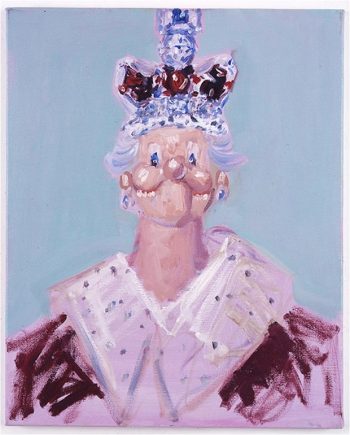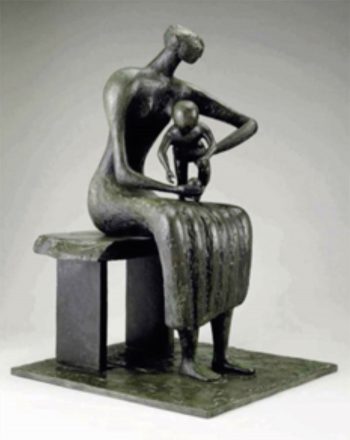
Some new or not so well known artists who have all outperformed auction expectations during 2020.
The advent of online only sales and bidding has not only broadened the International reach of Contemporary art auctions but also spawned new trends that have moved more quickly and been much more noticeable, especially in the Contemporary day sales which have often been overshadowed by the evening auctions. This makes the day sales even better hunting grounds and barometers of who is hot or not. Early evidence of up and coming artists is seen when their hammer prices hurtle past their high estimates many times over.
Here are a few of the artists who exceeded expectations at day sales during Covid restrictions in 2020. I think they are all ones to watch and may well appear in an evening sale soon!
Matthew Wong, River at Dusk, (2018)

Matthew Wong (Canadian, 1984-2019)
River at Dusk, 2018, oil on canvas, 203 x 178 cm
Offered at Phillips Hong Kong, December 3, 2020, estimate 7-10 million HKD sold for 37,760,000 HKD. A new world record for the artist.
The Canadian born Chinese Matthew Wong smashed into the International Art market in 2020.
His ‘River at Dusk’ painted in 2018 was offered in Hong Kong on December 3rd 2020 by Phillips in association with Poly Auctions. It made nearly 5 times its low estimate of 7 million HKD (approx. £700,000) selling for 37,760,000 HKD . Self-taught as a painter , Wong’s untimely death in 2019 at the age of only 35 has robbed us of one of the most talented painters of his generation. Therefore inevitably and tragically the number of his available works is limited.
Salman Toor, Rooftop Party With Ghosts 1 (2015).

Salman Toor, Rooftop Party With Ghosts 1 (2015) Photo courtesy Christie’s.
Auction: Christie’s New York, December 3
Estimate: $100,000 to $150,000
Sold For: $822,000
Salman Toor, was born in Lahore, Pakistan in 1983
and lives and works in New York City
Christina Quarles, Tuckt (2016)

Christina Quarles, Tuckt (2016). Photo courtesy of Phillips.
Auction: Phillips New York, December 8
Estimate: $70,000 to $100,000
Sold For: $655,200
Christina Quarles was born in Chicago, IL in 1985 and raised in Los Angeles, CA. She completed her BA at Hampshire College in 2007 with a double concentration in Philosophy and Studio Arts. Christina earned her MFA in Painting and Printmaking from Yale University in 2016. She currently lives in Los Angeles, CA with her wife and two cats.
Christina Quarles is being hailed as the ‘hottest artist in America’
Pilar Corrias Gallery in London, recently sold works for as much as $200,000. In 2021 Quarles’s delayed solo show opens in Chicago, debuting dozens of paintings and sculptures.
Bernard Frize, Néoco (2004)

Bernard Frize, Néoco (2004). Photo courtesy Sotheby’s.
Auction: Sotheby’s Paris, December 11
Estimate: $49,000 to $73,000
Sold For: $198,000
Bernard Frize was born in France in 1954 and in addition to the one above , on December 3, a painting sold for $276,000 at Phillips’s evening sale in Hong Kong, and then days later, at Sotheby’s Paris, another went for $198,000—well over its high estimate of $73,000.
Alex Gardner, Moment (2018)

Alex Gardner, Moment (2018). Photo courtesy Phillips.
Auction: Phillips New York, December 8
Estimate: $20,000 to $30,000
Sold For: $170,000
Alex Gardner is an LA based American painter, he was born in 1987
In his first ever appearance at auction, Gardner saw his 2018 painting Moment, sail past its $30,000 high estimate to sell for $170,000. As far as I can tell this is his first time out and the only pictures offered at auction so far, it certainly will not be the last!
Ayako Rokkaku, Untitled (2012)

Ayako Rokkaku, Untitled (2012). Photo courtesy Christie’s.
Auction: Christie’s Hong Kong, December 2
Estimate: $45,000 to $71,000
Sold For: $306,000
In 2003, the self-taught Japanese artist Ayako Rokkaku, then just 21 won the Scout Prize at Geisei, the biannual Tokyo art fair founded by artist Takashi Murakami. Since then, Rokkaku has continued to make her manga-inspired, largely hand-painted works, which often involve cartoonish depictions of young girls.
In early December at the Christie’s Hong Kong auctions series, a signature work by Rokkaku sold for $306,000, well above its high estimate of $70,000, thus creating a new record for the artist. This record did not last long as at the the Taiwan auction house Ravenel, when The Sisters, sold for $416,000.
Kudzanai-Violet Hwami, Eve on Psilocybin (2018)

Kudzanai-Violet Hwami, Eve on Psilocybin (2018). Photo courtesy Phillips.
Auction: Phillips New York, December 8
Estimate: $30,000 to $40,000
Sold For: $252,000
Born in Zimbabwe in 1993 Kudzanai-Violet Hwami is another new young artist on the gallery and auction scene. Although only 26 at the time she was chosen as one of the four artists to represent Zimbabwe in the 2019 Venice Biennale despite the fact that she will not finish her MFA at the Ruskin School of Art until this year, 2021.
Hwami’s first auction showing was for her psychedelic Eve on Psilocybin , it was lot 1in the sale and it set a strong trend for the whole sale, multiple bidders pushed the price up to $252,000, well above the high estimate of $40,000




































































